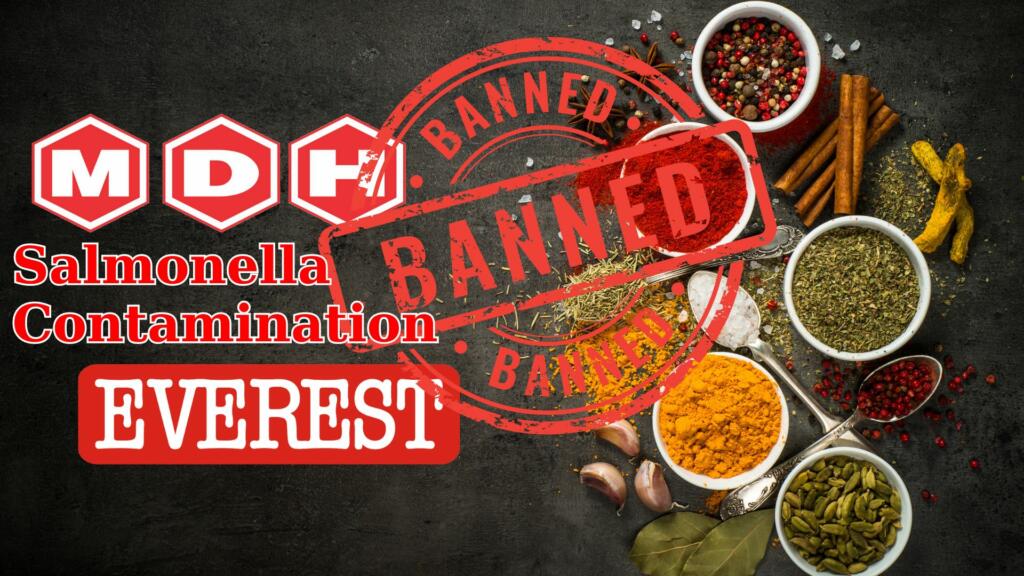Salmonella contamination in spices has emerged as a pressing issue, with recent incidents shedding light on the vulnerabilities within the global food supply chain. This comprehensive analysis aims to delve deeply into the origins, implications, regulatory responses, and future implications of the salmonella contamination crisis in spices.
The origins of the salmonella contamination crisis in spices can be traced back to a confluence of factors, including inadequate hygiene practices, lax regulatory oversight, and challenges associated with global supply chains. In the case of Mahashian Di Hatti (MDH) Pvt Ltd, a leading spice manufacturer, a significant portion of its shipments to the US were rejected due to salmonella contamination. Similar incidents involving other manufacturers, such as Everest Food Products Pvt Ltd, have further underscored the magnitude of the problem.
Reasons Behind Salmonella Contamination:
Poor Hygiene Practices: Inadequate sanitation measures during the production, processing, and packaging of spices can lead to contamination by salmonella bacteria.
Cross-Contamination: Spices may come into contact with contaminated surfaces or equipment during handling, transportation, or storage, facilitating the spread of salmonella.
Globalization of Supply Chains: The complexity of global supply chains increases the risk of contamination, as products pass through multiple stages before reaching consumers, making it challenging to trace the source of contamination.
Regulatory Gaps: Weak enforcement of food safety regulations, both domestically and internationally, allows for lapses in quality control and oversight, contributing to the persistence of contamination issues.
Implications of Salmonella Contamination
Public Health Risks: Salmonella infections can cause severe illness, particularly in vulnerable populations such as children, the elderly, and immunocompromised individuals. The prevalence of antibiotic-resistant strains further complicates treatment and increases the risk of adverse outcomes.
Economic Consequences: Rejected shipments and recalls due to salmonella contamination result in significant financial losses for manufacturers, distributors, and retailers. Moreover, the erosion of consumer confidence can have long-term repercussions on market demand and brand reputation.
Regulatory Scrutiny: Incidents of salmonella contamination prompt heightened regulatory scrutiny and enforcement actions, including product recalls, import bans, and facility inspections. Regulatory agencies are under pressure to strengthen oversight and ensure compliance with food safety standards.
International Trade Disputes: Salmonella contamination incidents can strain international trade relations, as importing countries may impose restrictions on the entry of contaminated products, leading to trade disruptions and diplomatic tensions.
Regulatory Responses and Enforcement Measures
Regulatory agencies, both domestic and international, have responded to the salmonella contamination crisis with various enforcement measures.
Product Recalls: In response to confirmed cases of salmonella contamination, regulatory agencies issue product recalls to remove affected items from the market and prevent further consumer exposure.
Import Bans: Importing countries may impose bans or restrictions on the entry of contaminated products, requiring manufacturers to demonstrate compliance with food safety standards before resuming exports.
Facility Inspections: Regulatory authorities conduct inspections of manufacturing facilities to assess compliance with hygiene practices, quality control measures, and regulatory requirements. Non-compliant facilities may face penalties, sanctions, or suspension of operations.
Surveillance and Monitoring: Regulatory agencies enhance surveillance and monitoring efforts to detect and prevent instances of salmonella contamination, including sampling and testing of imported and domestic products.
What’s Next: Future Implications and Mitigation Strategies
Looking ahead, several key considerations and mitigation strategies are essential to address the salmonella contamination crisis in spices.
Strengthening Regulatory Frameworks: Governments and regulatory agencies must strengthen food safety regulations, enforcement mechanisms, and oversight to mitigate the risk of salmonella contamination in spices. This includes enhancing surveillance capabilities, implementing risk-based inspection programs, and promoting industry compliance with best practices.
Collaboration and Information Sharing: Enhanced collaboration and information sharing among stakeholders, including manufacturers, regulators, researchers, and consumers, are essential to identify emerging risks, share best practices, and develop effective mitigation strategies.
Adoption of Technology: Leveraging technology, such as blockchain, DNA sequencing, and real-time monitoring systems, can improve traceability, transparency, and accountability across the spice supply chain. By enhancing visibility and data management, technology facilitates rapid response to contamination incidents and prevents their recurrence.
Consumer Education and Awareness: Educating consumers about the risks of salmonella contamination, proper food handling practices, and the importance of purchasing products from reputable sources can empower individuals to make informed choices and reduce the risk of exposure to contaminated spices.
In conclusion, the salmonella contamination crisis in spices represents a complex and multifaceted challenge with far-reaching implications for public health, economic stability, and international trade. Addressing this crisis requires a concerted effort from governments, regulatory agencies, industry stakeholders, and consumers to strengthen food safety systems, enhance regulatory oversight, and promote transparency and accountability across the spice supply chain. By implementing comprehensive mitigation strategies and fostering collaboration among stakeholders, we can mitigate the risks associated with salmonella contamination and safeguard the integrity of the global food supply.
Also Read: Intermittent Fasting: Good for Cardiovascular Health, But A Big No For Brain
